Cars are well-known means of transportation, but there are many types of hoses on cars. Different hoses play different roles. Do you really comprehend? Today I will take everyone to get to know the hose for getting off the car:
Automotive hoses are important parts of automotive, they are mainly divided into fuel hoses, brake hoses, radiator hoses, air-conditioning hoses, power steering hoses, turbocharger hoses, etc., which are mainly distributed in three major systems of automobile chassis, engine and body to transport oil, air and water.
一. Categories and characteristics of auto hoses
Rubber connecting hoses on automobiles can be roughly divided into three categories: low pressure hoses, high pressure hoses and oil resistant hoses. Although the structure of the hose is different, it is roughly composed of three basic parts: inner rubber layer, reinforcing layer and outer rubber layer. The inner rubber layer is the working layer of the hose in contact with the medium, and plays the role of sealing the medium and protecting the reinforcement layer. The reinforcement layer is the pressure-bearing part of the hose, and it also gives the entire hose the necessary rigidity and strength. The outer rubber layer is the protective layer of the hose.
1. Low-pressure hoses include radiator hose and brake bleed hose. The mechanical properties of low pressure hoses are not high. When selecting and matching, mainly check the appearance size, and the appearance should be free of delamination, plastic holes, blistering, wrinkles, cracks, dents, distortion, uneven wall thickness, etc. If necessary, a thermal aging test of the radiator connecting hose can be done.
2. High-pressure resistant hoses include brake system and hydraulic system connection hoses. The reinforcement layer of the high-pressure hose adopts braided hose and winding hose. The high-pressure hose is required to have good pressure resistance, oil resistance, flexibility, no cracks at low temperatures, vibration resistance, and low expansion. The inner rubber layer must be uniform, smooth on the surface, and free of pores; the reinforcement layer should be tightly bound to the inner rubber layer; the outer rubber layer should also be close to the reinforcement layer to prevent it from being damaged. The metal joint threads at both ends should be tightly embedded in the rubber surface. In addition to checking the appearance and dimensions of the high-pressure hose, a pressure test must be carried out one by one before use.
3. Oil-resistant hoses include gasoline, diesel, lubricating oil and fuel hoses. The oil-resistant hose has good oil resistance and can be used for a long time under working pressure. The external dimensions should meet the requirements, and the thread of the hose connector should be undamaged to avoid oil leakage after tightening.
二. Function and usage requirements of automotive hose
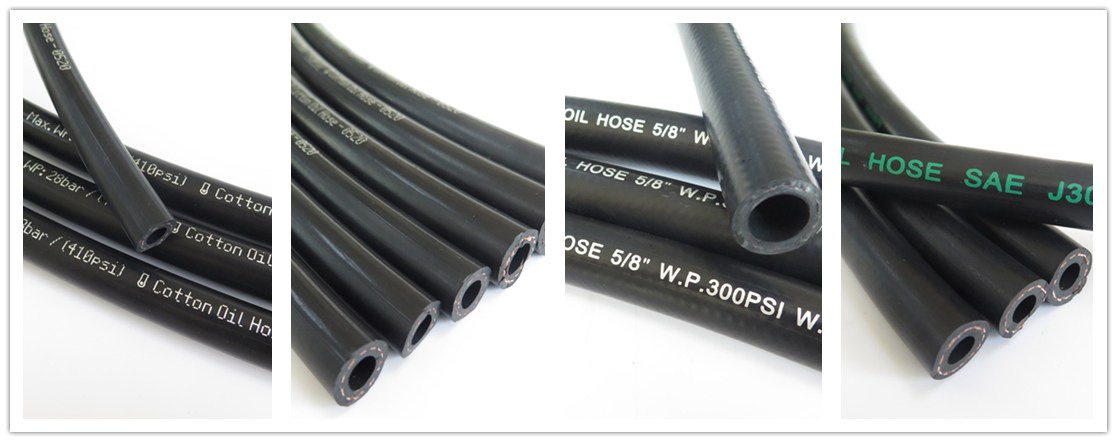
1. Fuel Hose
In the automobile fuel system, the fuel hose is connected to the fuel tank, canister, fuel pump, crankcase and other components. On the one hand, it transmits fuel to the engine for combustion work, and on the other hand, it transmits vaporized oil and gas, unburned fuel, and fuel exhaust gas to fuel purification. The system burns or emits. With the tightening of fuel consumption regulations, the traditional three-layer structure of fuel hose materials is constantly being replaced by new material technologies. E85 ethanol gasoline (that is, a blend of 85% ethanol and 15% gasoline) is the lowest carbon dioxide emission among the currently available vehicle fuels, so it is more favored by consumers.
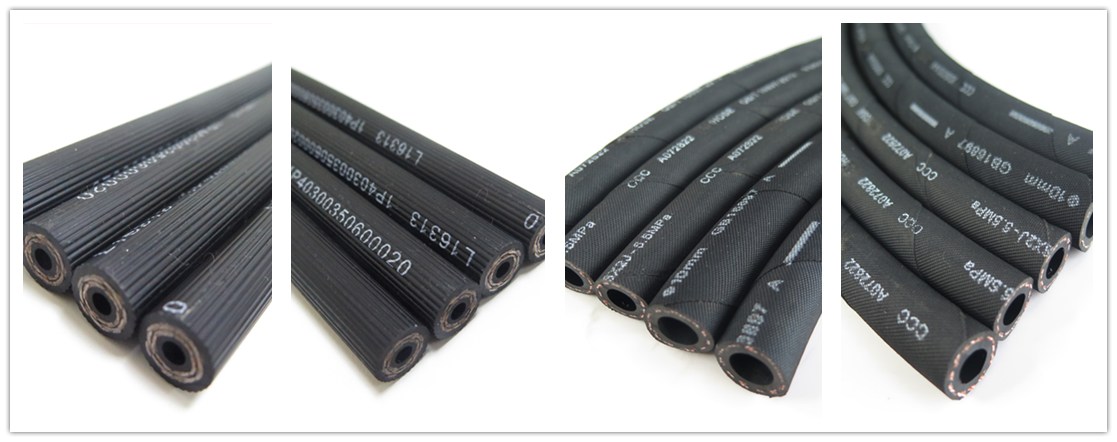
2. Brake hose
Brake hose, as an irreplaceable part of the automobile brake system, automobile rubber parts are mainly used to transmit braking force to the automobile brake shoes or brake calipers to ensure the continuous operation of the braking force. With the increasing requirements for braking performance, energy conservation and environmental protection regulations, and the development and application of new materials, the inner rubber of brake hoses has been replaced by ethylene propylene diene rubber (EPDM) instead of styrene butadiene rubber (SBR). ), the inner rubber of the brake hose also has more choices of natural rubber (NR), nitrile rubber (NBR), neoprene (CR), EPDM, special rubber, etc.
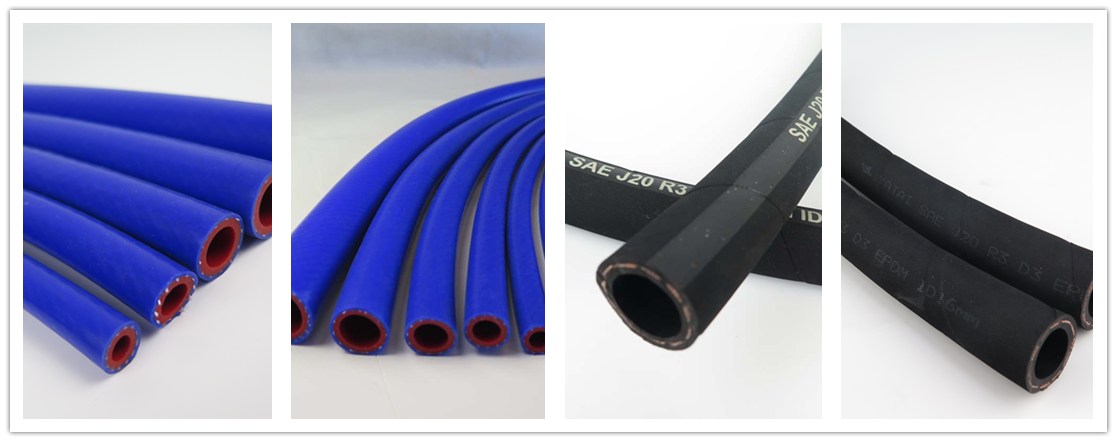
3. Radiator hose
The automobile radiator hose is a flexible pipeline connecting the automobile engine and the radiator, and is one of the key components in the key parts of the automobile. With the rapid development of the automobile industry, especially the development of automobiles in the direction of energy saving and low pollution, the temperature of the engine compartment has increased by 15-50 ℃ in recent years, and the performance of the whole vehicle has been continuously improved. Higher technology has been proposed for rubber hoses used in automobiles. Requirements, the hose must withstand the high temperature test around the engine, adapt to the extremely high temperature and extremely low temperature conditions in the field, and the market demand is correspondingly expanding. Therefore, the original radiator hose produced by the sulfur vulcanization system is gradually replaced by the products produced by the hydrogen peroxide system, and the main material used is EPDM.
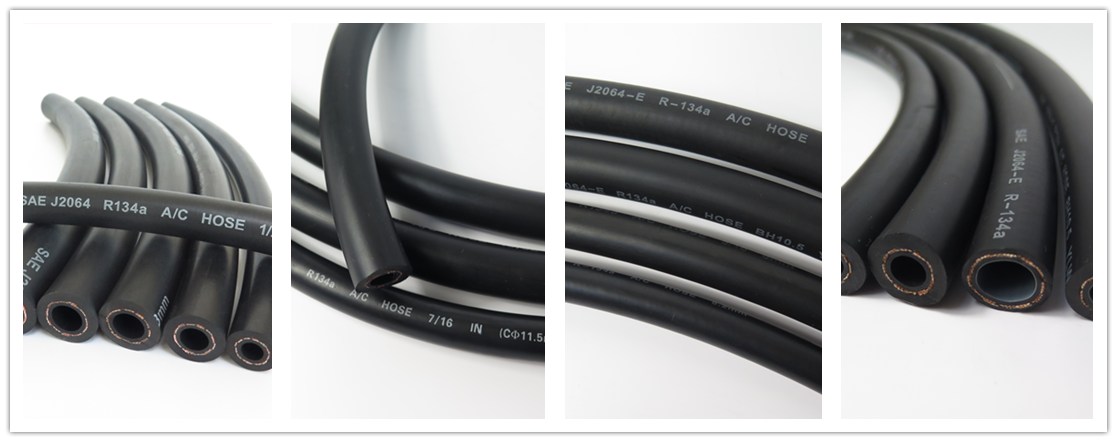
4. Air conditioning hose
Used in automobile air-conditioning refrigeration system, it completes refrigeration repetition by transmitting refrigerants of different pressures and gas-liquid states. With the application of the new environmentally friendly refrigerant R134a, the structure and material of air-conditioning hoses have changed greatly. The inner rubber layer uses resin and chlorine The structure of butyl rubber and EPDM rubber is the best combination for air conditioning hose.
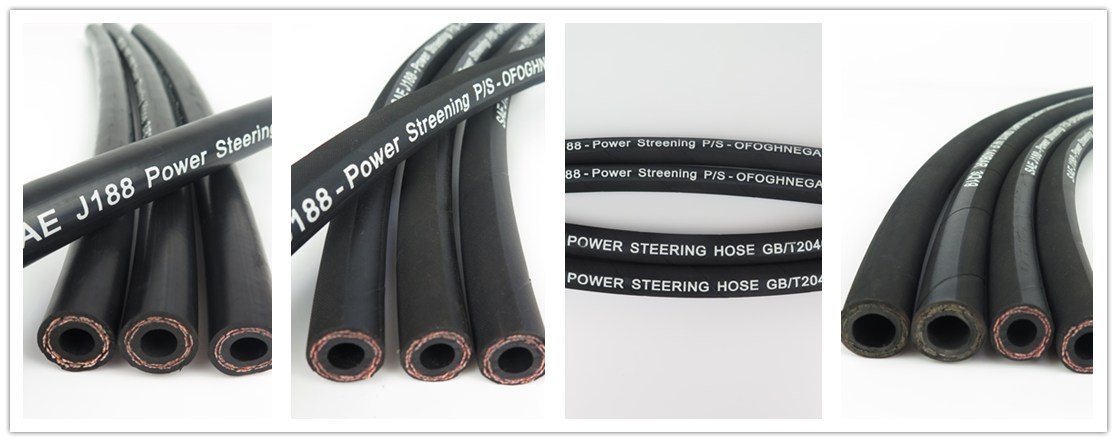
5. Power steering hose
The contact medium of the power steering hose is mineral oil. The hose is required to increase heat resistance and durability. The inner rubber layer has good oil resistance, and the outer rubber layer is wear-resistant, heat-resistant (above 150°C), and weather resistant. In the past, nitrile rubber and neoprene rubber were generally used for the inner and outer rubber layer materials of this hose, but now it is developing in the direction of hydrogenated nitrile rubber (HNBR), chlorosulfonated polyethylene rubber, chlorinated polyethylene and acrylic rubber. The new structure of hydraulic steering hose generally uses HNBR as the inner rubber layer, nylon 66 as the strength-enhancing layer, and chlorosulfonated polyethylene rubber as the outer rubber layer. In order to improve the heat resistance, fluorine rubber is also used for the power steering hose, but because fluorine rubber is easy to react with certain additives in the oil, its application is limited.
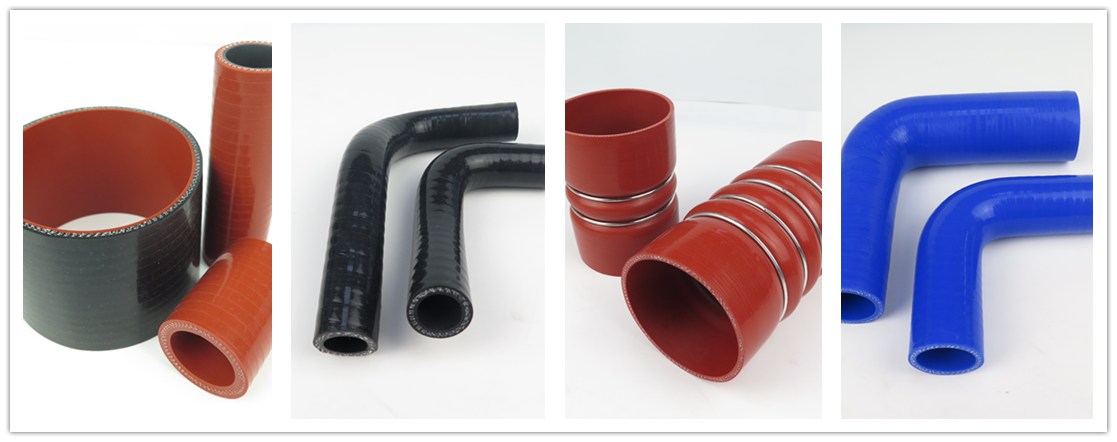
6. Turbocharger hose
The biggest requirement of the wheel supercharger hose is to have good heat resistance. At present, the foreign turbocharger hose adopts a full rubber structure, that is, the inner rubber layer is composed of fluorine rubber and silicone rubber with good heat resistance, and the reinforcement layer is made of high-strength aramid fiber Knitted composition, the outer rubber layer is made of silicone rubber.
Yatai factory directly supplies all kinds of automotive hoses, using Korean imported rubber, with 45% rubber content , and can provide one-year warranty. YATAI's professional technical R&D team continuously improves product quality, and the professional service team provides you with professional choices. Please contact us for details!
Contact us
Lotus Zhao
Tel:+86 15603187112(wechat & whatsapp)
Email: lotus@chnhose.com
Web: www.chnhose.com